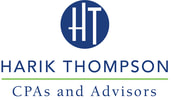|
The Taxpayer Certainty and Disaster Tax Relief Act of 2020 generally extends through the end of 2021 four temporary tax changes originally enacted by the CARES Act. Here is a summary of the provisions (more details are available on the IRS site): Deduction for individuals who don't itemize; cash donations up to $600 qualify
Ordinarily, individuals who elect to take the standard deduction cannot claim a deduction for their charitable contributions. The law now permits these individuals to claim a limited deduction on their 2021 federal income tax returns for cash contributions made to certain qualifying charitable organizations. Since almost 90% of taxpayers now take the standard deduction, according to the IRS, this benefit is a boon to many. These individuals, including married individuals filing separate returns, can claim a deduction of up to $300 for cash contributions made to qualifying charities during 2021. The maximum deduction is increased to $600 for married individuals filing joint returns. Cash contributions to most charitable organizations qualify, but see the IRS site for limitations. 100% limit on eligible cash contributions made by itemizers in 2021 Subject to certain limits, individuals who itemize may generally claim a deduction for charitable contributions made to qualifying charitable organizations. These limits typically range from 20% to 60% of adjusted gross income and vary by type of contribution and type of charitable organization. For example, says the IRS, a cash contribution made by an individual to a qualifying public charity is generally limited to 60% of the individual's AGI. Excess contributions may be carried forward for up to five tax years. However, the law now permits electing individuals to apply an increased limit, up to 100% of their AGI, for qualified contributions made during calendar year 2021. Qualified contributions are contributions made in cash to qualifying charitable organizations. Again, there are some limitations. Corporate limit increased to 25% of taxable income The law now permits C corporations to apply an increased limit, the Increased Corporate Limit, of 25% of taxable income for charitable contributions of cash they make to eligible charities during calendar year 2021. Normally, the maximum allowable deduction is limited to 10% of a corporation's taxable income. Again, the Increased Corporate Limit does not automatically apply. C corporations must elect the Increased Corporate Limit on a contribution-by-contribution basis. Increased limits on amounts deductible by businesses for certain donated food inventory Businesses donating food inventory that are eligible for the existing enhanced deduction (for contributions for the care of the ill, the needy and infants) may qualify for increased deduction limits. For contributions made in 2021, the limit for these contribution deductions is increased from 15% to 25%. For C corporations, the 25% limit is based on their taxable income. For other businesses, including sole proprietorships, partnerships and S corporations, the limit is based on their aggregate net income for the year from all trades or businesses from which the contributions are made. A special method for computing the enhanced deduction continues to apply, as do food quality standards and other requirements. The IRS reminds both individual and business donors to keep good records of their giving, and it outlines recordkeeping rules on its site. Let us know if you have questions about donation rules. Comments are closed.
|
Newsletter articles are posted every 2 weeks. If you would like to have our e-newsletter delivered directly to your inbox, please sign up. Your information is confidential; you can unsubscribe at any time. Subscribe. Categories
All
|
Proudly powered by Weebly

 RSS Feed
RSS Feed